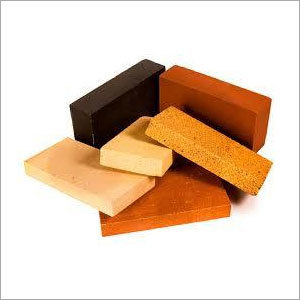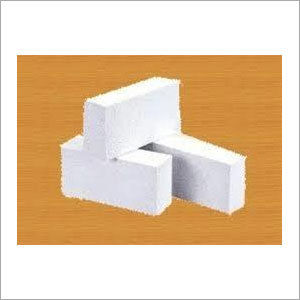
Refractory Fireclay Brick
55.00 - 120.00 INR/Ton
Product Details:
X
Refractory Fireclay Brick Price And Quantity
- 55.00 - 120.00 INR/Ton
- 20 Ton
Refractory Fireclay Brick Trade Information
- Rajasthan
- Cash in Advance (CID) Cash Advance (CA)
- 2000 Ton Per Day
- 1 Week
- Yes
- Himachal Pradesh Andaman and Nicobar Islands Uttarakhand Daman and Diu Dadra and Nagar Haveli Lakshadweep Meghalaya Tripura Rajasthan Jharkhand Sikkim Mizoram Manipur Delhi Telangana Kerala Gujarat Chandigarh Andhra Pradesh East India Bihar Punjab Assam Goa Tamil Nadu Maharashtra West Bengal Jammu and Kashmir Pondicherry Arunachal Pradesh South India Nagaland Uttar Pradesh Haryana All India Madhya Pradesh Karnataka North India Central India Odisha West India Chhattisgarh
Product Description
About Product:
The provided hard Refractory Fireclay Brick is fabricated from unfired hard-headed bond clay and fireclays fired recalcitrant clay or comparative grog materials. This has two primary parts to be specific 18- 44 % alumina and 50- 80 % silica. The assortment of clays and assembling procedures permits the generation of various block types proper to specific applications. In addition, the helpfulness of our product is high because of the existence of mineral mullite that frames amid firing. It is portrayed by high hard-headedness and low heat extension.
Production of Product:
Our solid Refractory Fireclay Brick basically comprises of hydrated aluminum silicates alongside minor ratio of different minerals. It is the most well-known individual from this group. At elevated temperature, the consolidated water is driven off, and the buildup hypothetically comprises of 54.1% silica and 45.9 % alumina. Nevertheless, even the most flawless clays contain small measures of different constituents, for example, mixes of lithium, potassium, sodium, titanium, magnesium, calcium, iron and typically some free silica. The absolute amount of the fluxing specialists that bring down the dissolving point ought to be at a dimension of 5-6 % optimum.
Refractory Fireclay Brick Chemical/Physical Property:
- State : Brick
- Particle Size : 10-mesh screen
- Boiling Point : 1730° C
- Melting Point : about 50° C.
- Density : 1.6~1.8 g/cm3
- Thermal Conductivity : 0.65
Uses:
1) Refractory Fireclay Brick for Blast Heater : This sort of firebricks is produced with fireclay as the material to construct coating of the heater. It likewise can be utilized to construct heater throat, heater stack, heater hearth and heater base of small blast heater, and heater stack of vast heaters.
2) Refractory Fireclay Brick for Hot Blast Stove : The bricks are made of fireclay as a material to make hot blast stove. This sort of bricks are essentially utilized in insulating wall, regenerative chamber and more areas, which have great heat shock safety, high recalcitrance under low and load creep deformation.
Other Products in 'Insulation Bricks' category
|
|
|
 |
SRINATH ENTERPRISES
All Rights Reserved.(Terms of Use) Developed and Managed by Infocom Network Private Limited. |





